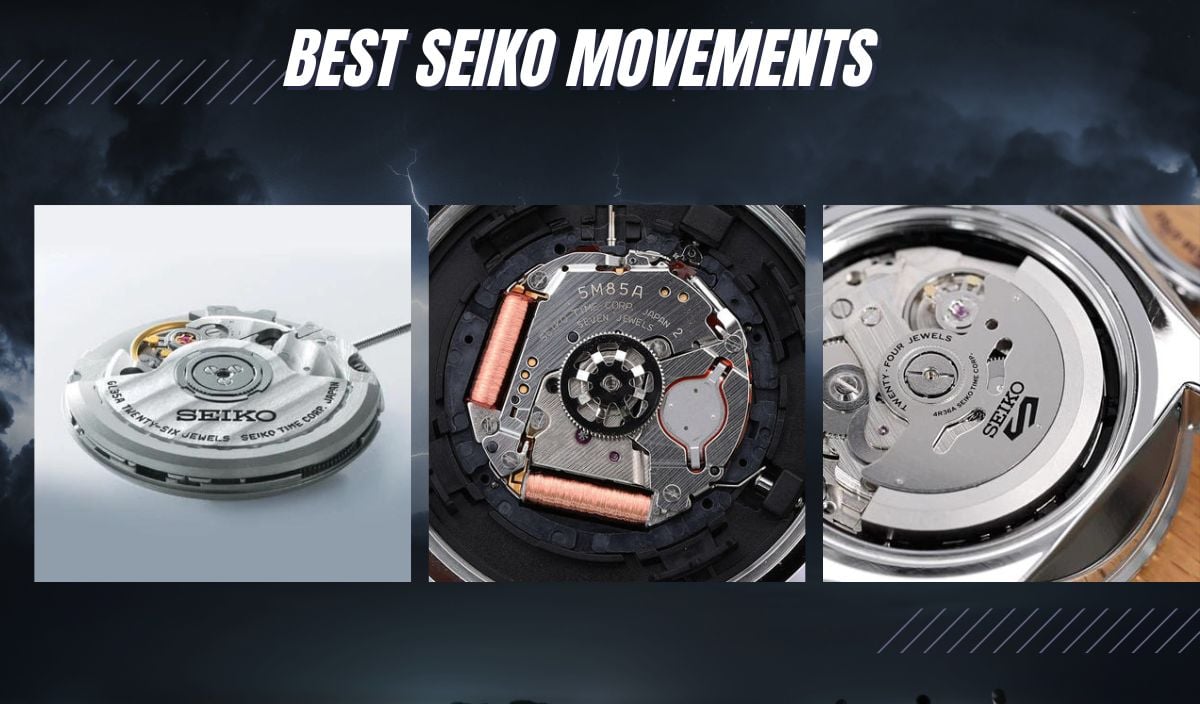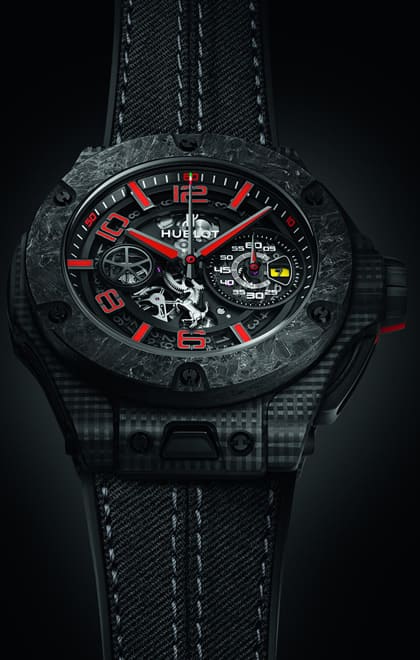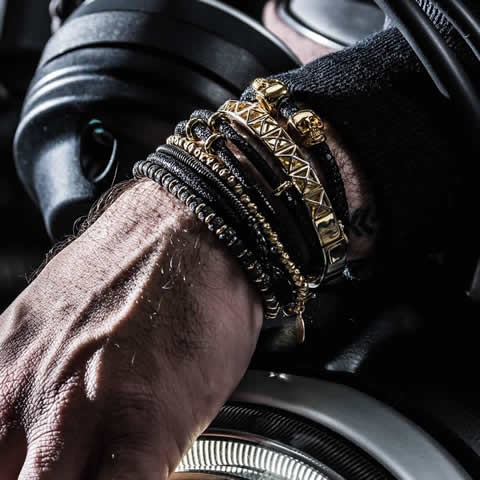
15 BEST Seiko Movements of All Time (Mechanical MARVELS!)
The movement or caliber in a watch is like the motor in a car, the mechanism in a gearbox, or the beating heart in your chest. For centuries engineers have pushed the boundaries of what is possible with an automatic movement, and with contemporary mechanics, watch calibers are better than ever.
The pride of Japan, Seiko, is one of the leading caliber suppliers to the watch world and has produced several different kinds over the years. From high complications to a humble date function, let’s look at the 15 best Seiko movements.
About Seiko Movements
As mentioned, Seiko is incredibly innovative with horological movements and has been one of the leading caliber makers since its beginning. The first of the Seiko watches to feature a true sweep second hand was the Super, which was introduced a few years after WWII.
Unfortunately, the movement within the Super didn’t have a movement number. The first movement to have a number was in 1956, called the 290, which powered the Seiko Marvel. The caliber 290 featured auto-wind capability, a first for Seiko, which they called ‘Gyro Marvel’.
Over the next few years, Seiko continued to innovate, providing more accurate and reliable movements. They even introduced a high-end watch category for the opulent customers called ‘King Seiko’, but still a step below the exclusive ‘Grand Seiko’.
King Seikos had slightly improved movements compared to regular Seikos, such as the high-end 56XX range, the ‘Vanac’, and the ‘Lordmatic’. On December 25, 1969, Seiko released the first quartz-powered wristwatch. Rather than working with mechanical automatic movement, it is powered by a battery sending power through a quartz crystal to the hands of the watch.
The Seiko Quartz Astron 35SQ was far more accurate than mechanical watches, and most quartz watches are still more accurate today. Seiko doubled down on innovation, and in 1977, they released a solar-powered watch, and in 1988, they started production of the Seiko KINETIC.
The KINETIC had an oscillating weight that would convert movement into electricity and thereby powering the quartz movement. Seiko continued to engineer their mechanical movements throughout history, and in 2005 released the revolutionary ‘Seiko Spring Drive’.
Combining the endless power of an automatic movement and the precision of a quartz movement, the Spring Drive uses a Tri-Synchro regulator to convert mechanical force from the mainspring to electrical energy.
The History of Seiko
Seiko finds its origin in 1881 when Kintaro Hattori set up a small watch-repair shop in central Tokyo. 11 Years later, Mr. Hattori set up the ‘Seikosha’ factory after purchasing a disused factory. Seiko started their business by producing watch clocks, followed by pocket watches, and then in 1913, they released their first wristwatch – the Laurel.
The Laurel was also the first wristwatch to be made in Japan and was a small, time-only watch featuring a small seconds hand, but it did not feature the Seiko namesake on the dial. The first watch to feature the Seiko name on the dial only went on sale in late 1924.
Over the last 100 years, Seiko has become one of the giants in the horology world, producing millions of watches each year, renowned for their accuracy, durability, and technological prowess.
Best Seiko Movements
Seiko Caliber 7S26 (and 7S36)
The caliber 7S26 started production in 1996 and became the workhorse in the Seiko lineup, being updated to the 7S26B in 2006 and 7S26C in 2011. The cal. 7S26 was featured in a myriad of watches, from the Seiko 5 range to the famous Seiko SKX range.
The accuracy of this entry-level movement was rated at -20 to +40 seconds per day and was equipped with a 41-hour power reserve, beating at 21,600 vibrations per hour. It also featured a day-date function at the 3 o’clock position.
The 7S26 is equipped with 21 jewels, and the newer cal. 7S36 has 23 jewels. It is speculated that the cal. 7S36 was supposed to replace the 7S26, but the cal. 4R36 ended up replacing the cal. 7S26 and can still be found in modern Seiko 5s.
The movement can usually go 5 – 25 years before a service is due, but due to inflation and changing times, the service costs might often be more than the movement or the entire watch.
Seiko Caliber 4R36
As just mentioned, the caliber 4R36 ended up replacing the cal. 7S26 in many of Seiko’s entry-level watches. Introduced in 2019, the movement features in every single modern Seiko 5, barring, of course, the newly introduced GMTs. It also powers other Seiko’s like SARY055, Stargate II SRP510, Monster SRP455 Limited Edition, and Recraft SRPC13K1.
The movement is equipped with a robust 40-hour power reserve thanks to a 21,600 bph frequency. It features 24 jewels and has an accuracy of +45 / -35 seconds per day.
The upgrade compared to the cal. 7S26 came with the addition of hand-winding and hacking capabilities, improving any watch’s capabilities dramatically. The 4R36 is still going strong and is also being produced as the cal. NH36 for non-Seiko watches.
Seiko Caliber 6R15 (and 6R35)
Moving from entry-level sports watches to dress and tool watches, we have the caliber 6R15. Powering models like the Sumo SBDC027 Prospex Diver, Alpinist SARB017, and some Prospex Divers, the caliber had 4 different versions (A, B, C, and D) is the base caliber for the calibers 6R20, 6R21, and 6R24, and 6R27.
Elevating from what we’ve already discussed, the 6R15 has a robust 50-hour power reserve, beats at 21,600 vph, and has an accuracy of -15 / +25 seconds per day. In case it isn’t clear, this movement is a massive step up from the 7S26. It is also cheaper to produce than some other Seiko calibers.
The upgrade, the 6R35, doubles down on innovation. Not only is the power reserve bumped to 70 hours, but it is thinner than the 6R15. If you find a Seiko powered by the upgrade, be expected to pay a little more than a 6R15-powered Seiko.
Seiko Caliber 8L35
The caliber 8L35 is based on the Grand Seiko caliber 9S55 and is, apparently, assembled by hand by hand at Shizuku-ishi Watch Studio in Morioka. With an accuracy of -10 / +15 seconds per day, the caliber is pretty accurate even though Seiko suggests you service your watch regularly once every 2-3 years.
The watch powers various Proxpex divers, Marinemasters, and Brightz Phoenix models and features normal time functionality and a date function at the 3 o’clock position. In 2015, Seiko introduced micro-electromechanical parts in the 8L35 range, and these upgraded calibers were featured in higher-end Prospex divers.
Seiko Caliber 5R65
Found in select Seiko models like the Seiko Marinemaster Golden Tuna, the cal. 5R65 offers an amazing accuracy rating of +/- 1 seconds per day and only +/- 15 seconds per month. This is because the movement features the spring drive technology we mentioned before.
With a sturdy power reserve of 70 hours and the reassurance that the movement cannot be overwound (thanks to the slipping mechanism), the movement is a favorite amongst enthusiasts. Being able to beat at a frequency of 28,800 vph while maintaining a high power reserve is a tremendous technological feat.
There is one different version of the cal. 5R65 called the cal. 5R64, which instead of a center seconds hand, has a small seconds hand.
Seiko Caliber 8R48
The first chronograph caliber in our list features in the Seiko Prospex Speedtimer range. Initially introduced in 2014 within the limited edition Prospex SRQ029, with only 1000 produced. Caliber 8R46 is a tribute to Seiko’s first-ever chronograph watch, released in 1969.
The cal. 8R48 has a vertical clutch and a column wheel for precise timekeeping, and with an adequate power reserve of 45 hours, it makes for a very usable chronograph. You can also find the cal. 8R48 in other watches as the cal. NE86, since Seiko supply their own movements as third-party technology to other companies.
Overall, the cal. 8R48 is one of the best modern chronographs, according to enthusiasts, thanks to its remarkable precision and, due to the 34 jewels, exceptional reliability.
Seiko Caliber NH35 (NH38, and NH36)
As mentioned, the cal. NH35 is essentially the Seiko cal. 4R35, which was introduced somewhere in 2011 – 2012. Chances are that most of the entry-level watches you have seen were or are powered by this movement, as if features in everything from Invicta, Vostok, and, of course, various cost-effective Seikos.
The hand-windable movement features a hacking function as well as a 41-hour power reserve. Beating at 21,600 vibrations per hour, the caliber has an accuracy of -20 / +40 seconds per day, which is why the movement can be replaced for quite cheap – $40 – $80.
The cal. NH35 is still a true workhorse, and so are its variations. The NH36 is a day-date version that is based on the Seiko cal. 4R36. The cal. NH38 is a no-frills version of the cal. NH35, as it does not feature a date function and is only a three-hand movement.
Seiko Caliber Y675 (and Y676)
The cal. Y675 is a rather old movement, introduced in the early 2000s but has long since been discontinued. The cal. Y675 is actually based on the cal. 7S25 and does not feature hacking or manual winding, unlike many of the other Seiko calibers. Seiko did not use this caliber themselves, but you’ll still be able to find it within its sister brands like Pulsar and Lorus.
Beating at a frequency of 21,600 bph and rated with an accuracy of -35 / +45 seconds per day, the movement would never set the world on fire. It was still cheap to produce and provided the beautiful sweeping seconds hand we all love. There was also another version of the movement called the cal. Y676, which added a day-date complication.
Seiko VK63 (VK64, and VK67)
Produced by Seiko Instruments Inc. (SII), the quartz VK63 forms part of the ‘hybrid mechanical quartz’ or ‘mechaquartz’ range. The regular timekeeping duties are dealt with by the quartz crystal, while a mechanical module will take care of the chronograph function.
Quartz movements will always be incredibly accurate, and the VK63 is no different, reporting only a deviation of +/- 20 seconds per month. The battery (number 394) is rated to last 3 years, but it depends on how often you end up using the chronograph function.
The cal. VK67 is based on the same base as the cal. VK63, with the only difference being that the cal. VK67 has a 12-hour indicator, whereas the cal. VK63 has a 24-hour indicator. The cal. VK64 has exactly the same base; however, its subregisters are located at 3 and 9 o’clock. It also has a date function at 6 o’clock.
Seiko Caliber 4R34 (and NH34)
The functionality of a GMT is perhaps the most usable complication in automatic watches, and to meet the market demands for a cost-effective GMT, Seiko released the Seiko 5 Sports GMT series in June of 2022.
Internally, these GMTs would be powered by the new cal. 4R34. This new movement boasts a power reserve of 41 hours when fully wound. Accuracy is good for the price you pay, rated at -35 / +45 seconds per day, and thanks to 24 jewels, the movement would only need a service every 2 – 3 years.
The cal. NH34 is the third-party version of the cal. 4R34, and will feature in other cost-effective GMTs from microbrands like the PHOIBOS Voyager GMT 200M Automatic Diver Watch.
Seiko Caliber 5X53
Recall the solar-powered watches Seiko introduced in 1977. The cal. 5X53 is one of those solar-powered calibers and powers some modern Seikos like the Astron GPS Solar Dual-Time models.
Being a quartz movement, its accuracy is ridiculous and rated at +/-15 seconds per month. Unlike many other quartz movements, it can set the time automatically using GPS. Even more impressive is the ‘power reserve’ of the battery, holding 6 months’ worth of power.
The cal. 5X53 also features a host of complications, a pointer day subdial at the 3 o’clock position, a date window at the 16h30 position, as well as a world time function.
Seiko Caliber V175
Another solar-powered movement, but this time has the added functionality of being a chronograph as well. Powering the Prospex Air Diver’s Chronograph series, the cal. V175 is actually a remarkable movement because you get the functionality of a chronograph with precision and limitless power from a quartz solar caliber.
With an accuracy rating of +/- 15 seconds per month, the cal. V175 is far more accurate than any automatic caliber mentioned, barring the spring drive. Seiko claims the watch merely needs 2 minutes of sunlight exposure to store enough energy to last a full day and about 5 hours to charge the watch fully. When fully charged, it’d last 6 months.
Seiko Caliber 7A28A
The cal. 7A28A falls in the ‘neo-vintage’ range of watch calibers, not quite old enough to be vintage, but since production started in 1983, it has had some life. The cal. 7A28A also carries a massive title, being the first analog display quartz chronograph ever produced.
The 80s were filled with watches that had LCDs, and so Seiko decided to drive innovation once again by going in the other direction. The cal. 7A28A did not feature plastic parts like other quartz movements, which meant the caliber could be serviced.
With an accuracy rating of +/- 10 seconds per month, small wonder superspy James Bond had a variation of the cal. 7A28A on his wrist in the movie ‘A View to a Kill’. Actor Roger Moore wore the Seiko model SPR007, a white dial stainless steel chronograph.
Seiko Caliber 7C46
Another older quartz caliber known as the cal. &c46, which was introduced in 1986. It featured in some higher-end Seikos like the Marinemaster and some Prospex divers. It also featured in the famous Seiko ‘Tuna’ models.
It features a day-date complication, and thanks to its higher beating frequency, the caliber, like all other quartz movements, has a high accuracy rating. In fact, it’s rated at only +/- 15 seconds per month. Battery life is rated at 5 years.
Seiko Caliber VH31
The cal. VH31 was introduced as a means to combine the precision of a quartz movement with the romanticism of a smooth second hand. Well, Seiko increased the quartz oscillation frequency to try and achieve that with the cal. VH31.
The second hand beats four times per second, making the movement much smoother and similar to the smooth movement of an automatic caliber.
Because the frequency is quite a bit higher, the battery life is only rated at 2 years, with accuracy being +/- 15 seconds per month.
Conclusion
When looking at the various offerings of the Seiko 5 range, it is clear that Seiko rewards innovation within their company, and it shows with their caliber manufacturing as well. Seiko did produce the first quartz watch but has also provided the world with some amazing automatic movements.
Let us not forget the groundbreaking spring movement, which set the horology world on fire. Seiko will continue to innovate not only with design but with technological prowess as well.
About Exquisite Timepieces
Established in 1998, Exquisite Timepieces is your one-stop shop for all things luxury watches! We are an authorized dealer for 60+ luxury watch brands including Omega, Hublot, Seiko, & Longines! We are proud to showcase one of the world’s largest pre-owned watch collections, including renowned brands like Rolex and Patek Philippe. Check out our brand new watch arrivals here and popular pre-owned listings here.








